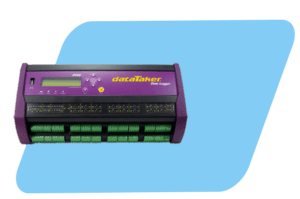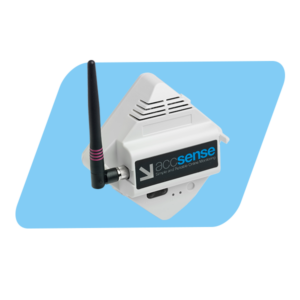Data loggers play a crucial role in various applications, from monitoring environmental conditions to recording critical equipment performance. With a wide range of products available, selecting the ideal data logger can seem overwhelming. This guide is intended to help you navigate the selection process with confidence by outlining five key considerations:

1. Determine Your Measurement Needs:
- Identifying Essential Parameters: Clearly define the specific parameters you intend to measure, such as temperature, humidity, pressure, voltage, or flow rate. This dictates the type of sensor(s) required in your data logger.
- Accuracy and Range: Determine the required level of accuracy for your measurements and the anticipated range of values you expect to encounter. Ensure the data logger’s specifications meet or exceed these requirements.
- Sampling Rate: Consider the frequency at which you need to capture data points. Higher sampling rates are necessary for fast-changing processes and detailed analysis, while lower rates may suffice for slower phenomena.
2. Data Storage and Accessibility:
- Storage Capacity: Estimate the amount of data you need to store based on the sampling rate, desired record duration, and number of channels being monitored. Choose a data logger with adequate storage capacity to avoid data loss.
- Data Retrieval: Evaluate the available methods for accessing and downloading your recorded data. Direct connections like USB or Ethernet, wireless transmission, and cloud-based storage are common options. Select a method that aligns with your infrastructure and data accessibility needs.
- Data Backup and Security: Consider the importance of data backup and security features, especially for critical applications. Look for loggers that offer options like automatic backups, password protection, and encryption to safeguard your valuable information.

3. Environmental Compatibility:
- Deployment Location: Identify where the logger will be used, whether indoors, outdoors, or in harsh environments. This consideration influences factors like water resistance, dustproofing, and enclosure requirements.
- Operating Conditions: Specify the expected temperature and humidity ranges the logger will encounter. Ensure its operating specifications encompass these ranges to guarantee reliable performance and accurate data collection.
- Environmental Hazards: If the deployment location exposes the logger to dust, water, or other hazards, choose a ruggedized model with appropriate protection features to ensure its longevity and functionality.
4. Power Supply and Battery Life:
- Available Power Source: Determine the power source available at the install location (AC, DC, battery). Match the logger’s power requirements to avoid compatibility issues.
- Battery Life Expectations: Consider the expected battery life of the logger, especially for remote deployments where frequent maintenance might be impractical. Choose a model with sufficient battery life to cover your desired recording period.
- Battery Maintenance: Evaluate the ease of battery replacement or rechargeability for the chosen data logger. Consider factors like accessibility and downtime to ensure smooth operation and data continuity.

5. Software and User Interface:
- Software Features: Explore the functionality offered by the data logger’s software, including data visualization, analysis tools, and export capabilities. Select software that caters to your specific data processing and analysis needs.
- User-Friendliness: Assess the user interface of the software for its ease of navigation and comprehensibility. A user-friendly interface simplifies data management and analysis, saving you time and effort.
- System Compatibility: Verify the software’s compatibility with your existing software and systems, such as data analysis tools, to ensure seamless integration and efficient data workflow.
Conclusion
By carefully considering these five key factors, you can make an informed and confident decision when selecting the right data logger for your application. Remember, the ideal data logger should perfectly align with your unique measurement needs, environmental conditions, and data management requirements. With this guide and a thorough evaluation process, you can unlock the full potential of data logging and gain valuable insights from your recorded measurements.

